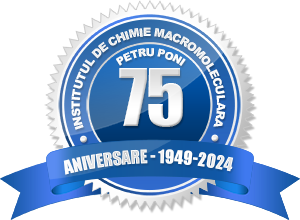The main goal of this project is to design and develop superior proton conductive materials based on renewable resources, i.e. cellulose-based compounds, and to understand, assess and control the physicochemical properties of such materials on their proton transport capability based on correlation with conductivity measurements. The ultimate goal is to appraise the possibility of using the composites of cellulose-based membranes incorporating various nitrogen-containing heterocycles as solid proton conducting electrolytes in fuel cell technology.
The scientific objectives to be addressed in this project are:
O1. Synthesis and characterization of cellulose-based derivatives: the future matrix for N-heterocyclic compounds incorporation – This objective imply the synthesis, purification and characterization of the carboxylate cellulosic materials what will be acted as matrix for the efficient incorporation of various heterocyclic compounds.
O2. Fabrication of hybrid composite membranes composed of a cellulose-based matrix and different N-heterocyclic compounds – For this step will be used two strategies: i) the “bottom-up” strategy where the cellulose derivatives synthesized and purified will be mixed with heterocyclic molecules (imidazole, N-hydroxybenztriazole and violuric acid) and ii) the “top-down” strategy where any of the N-heterocyclic compounds are added simultaneously with the cellulose acetate in the chosen solvent. The as obtained cellulose acetate hybrid films are converted in the next step into cellulose hybrid films by alkaline hydrolysis, and in the next step into oxidized cellulose hybrid films.
O3. Thoroughly physical characterization of the fabricated membranes - A wide range of techniques would be used to deeply characterize the obtained membranes: FTIR, SEM, TGA, mechanical and thermomechanical stability, proton conductivity measurements. | 







